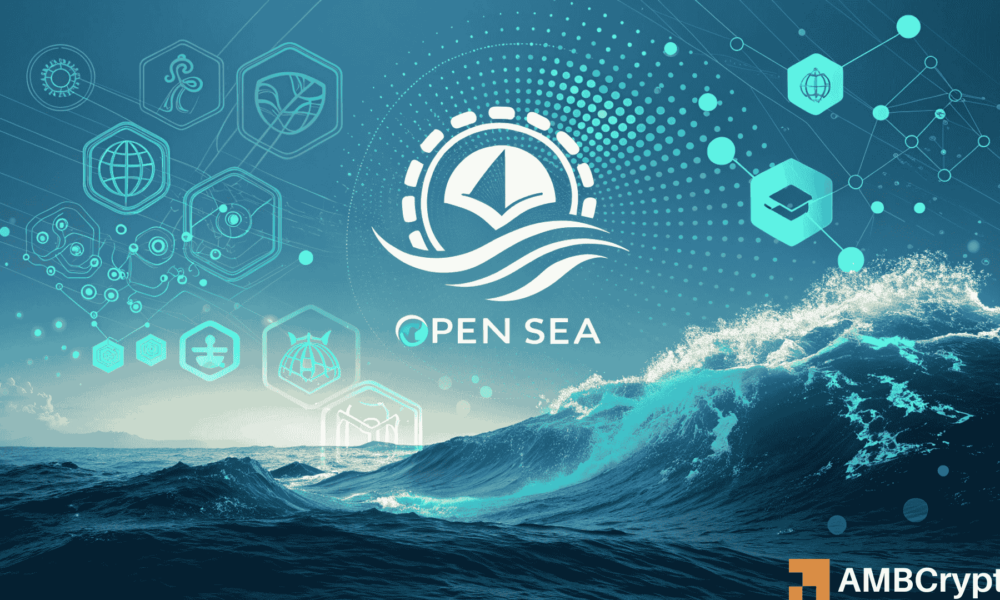Key Takeaways
Why is OpenSea pivoting away from NFTs?
OpenSea has crossed $2.6 billion in trading volume this month, with over 90% coming from token trading rather than NFTs.
What’s the $SEA token launch about?
OpenSea will launch its $SEA token in Q1 2026, and the token will power staking, governance, and its upcoming mobile app.
OpenSea is no longer just an NFT marketplace; it’s turning into a full-on-chain trading hub.
In a post on 17 October, Devin Finzer, OpenSea’s co-founder and CEO, announced the platform’s pivot to token trading.
He stated that the platform has crossed $2.6 billion in trading volume this month, with more than 90% coming from token trading.
The milestone signals OpenSea’s transformation “from an NFT marketplace to a place to trade everything.”
The once-dominant NFT marketplace is reinventing itself as a multi-asset trading hub, expanding beyond digital collectibles into tokens, perps, and even physical assets.
The development could be the clearest sign yet that the NFT sector’s 2022 boom is long over.
A pivot born from necessity for OpenSea?
Finzer described the rebrand as “the sequel” to OpenSea’s 2021 NFT wave, but the timing tells its own story.
NFT market data from CoinMarketCap shows a stagnant recovery, with total sector market capitalization hovering below $1 billion. This represents a significant decline from its 2022 highs of nearly $ 1 trillion.


Source: CoinMarketCap
While NFT volumes on Ethereum and Solana have shown short bursts of activity, the broader picture remains subdued.
Projects like Azuki and BAYC have lost more than 80% of their peak floor prices. Even Blur, OpenSea’s top rival, has seen its volume slide since mid-year, according to DappRadar data.
That makes OpenSea’s pivot look less like an optional expansion and more like a strategic survival move.
$SEA token: A fresh start for a fading era
To fuel the next phase, OpenSea will launch its $SEA token in Q1 2026. At launch, 50% of the allocation will be dedicated to the community, with the remaining half of OpenSea’s revenue dedicated to buying back the token.
Finzer says the token will “shine a spotlight on everything we’re building,” including staking, governance, and a mobile app now in closed alpha.
The move echoes a broader shift toward tokenized ecosystems in Web3, but also marks a turning point for OpenSea’s identity.
From pioneering digital ownership to now pursuing cross-chain liquidity, the company appears to be establishing itself in crypto’s financial layer, rather than its cultural one.
Is the NFT boom truly over?
OpenSea’s rebrand could be seen as both an evolution and a retreat — an evolution into onchain finance, and a retreat from an industry that failed to sustain mass interest.
If the largest NFT marketplace is betting on fungible tokens for growth, it may signal what many in the space quietly admit: the NFT comeback everyone expected after 2021 might never arrive.







